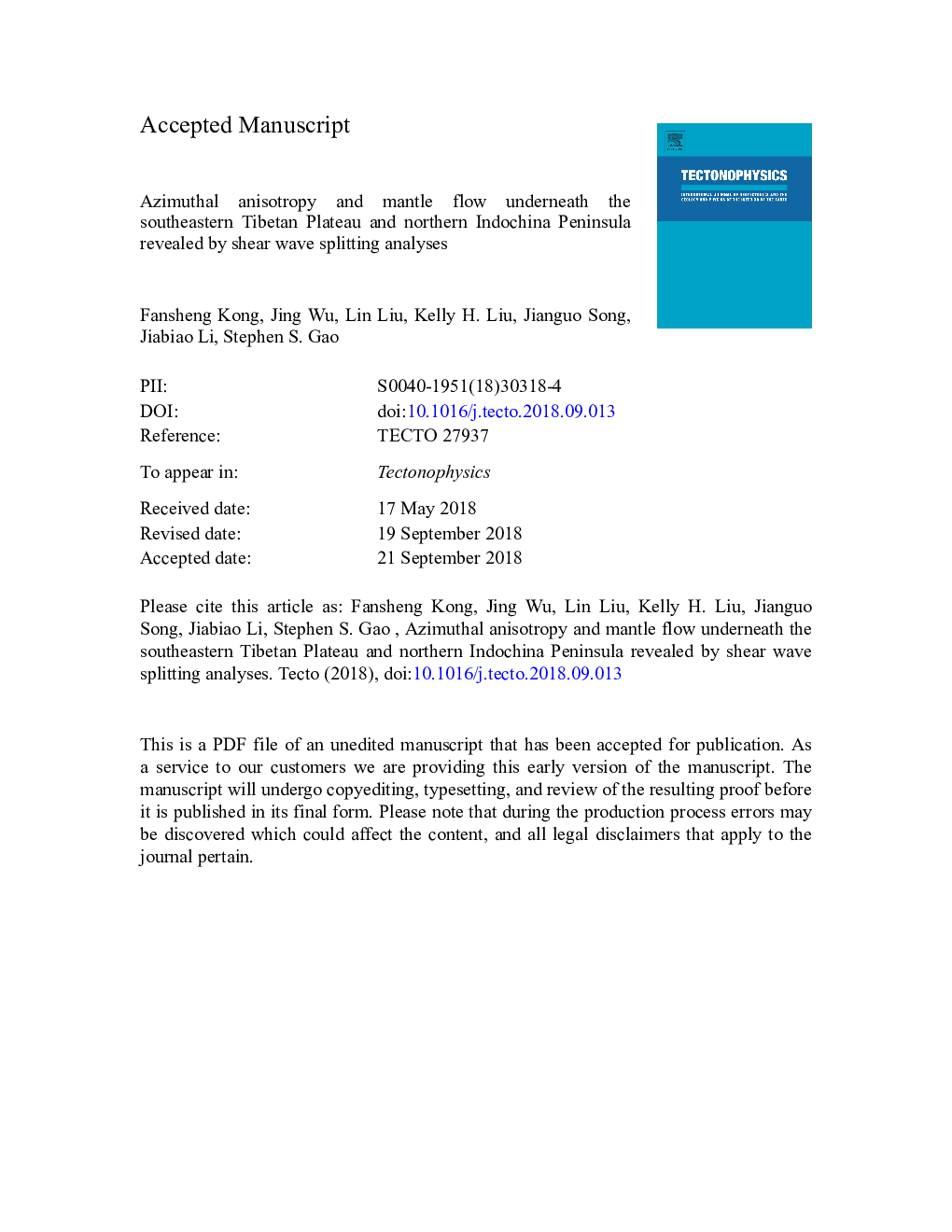| Article ID | Journal | Published Year | Pages | File Type |
|---|---|---|---|---|
| 10997907 | Tectonophysics | 2018 | 54 Pages |
Abstract
Seismic azimuthal anisotropy beneath the transitional region between the southeastern Tibetan Plateau and the Indochina Peninsula, an area in which the fast orientation of mantle anisotropy changes to dominantly E-W from mostly N-S on the plateau at the north, is quantified using splitting of the SKS, SKKS, and PKS phases. Among the 50 stations with one or more splitting measurements, 22 possess an azimuthal coverage that is adequate for the identification and characterization of complex anisotropy. The resulting splitting parameters from 15 such stations exhibit systematic back azimuthal variations with a 90° periodicity, which is consistent with a two-layered anisotropy model. The upper layer parameters are consistent with crustal anisotropy measurements obtained independently based on the sinusoidal moveout of P-to-S conversions from the Moho, with the fast orientations being mostly parallel to major shear zones. The lower layer fast orientations and the fast orientations at stations with azimuthally invariant splitting parameters are mostly E-W, which is significantly different from the dominantly N-S trend of the surface expression of major structural fabrics in the area. They are also inconsistent with the absolute plate motion directions. When combined with results from seismic tomography and focal mechanism solutions, the observed azimuthal anisotropy can be adequately explained by the movement of the lithosphere relative to the underlain asthenosphere, most likely associated with the westward rollback of the subducted Indian Plate.
Related Topics
Physical Sciences and Engineering
Earth and Planetary Sciences
Earth-Surface Processes
Authors
Fansheng Kong, Jing Wu, Lin Liu, Kelly H. Liu, Jianguo Song, Jiabiao Li, Stephen S. Gao,
